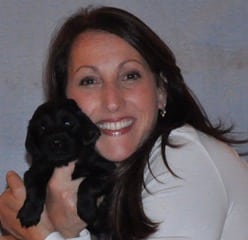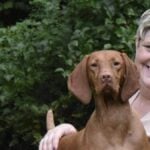
Home » Understanding the Flat-Coat Head and Silhouette
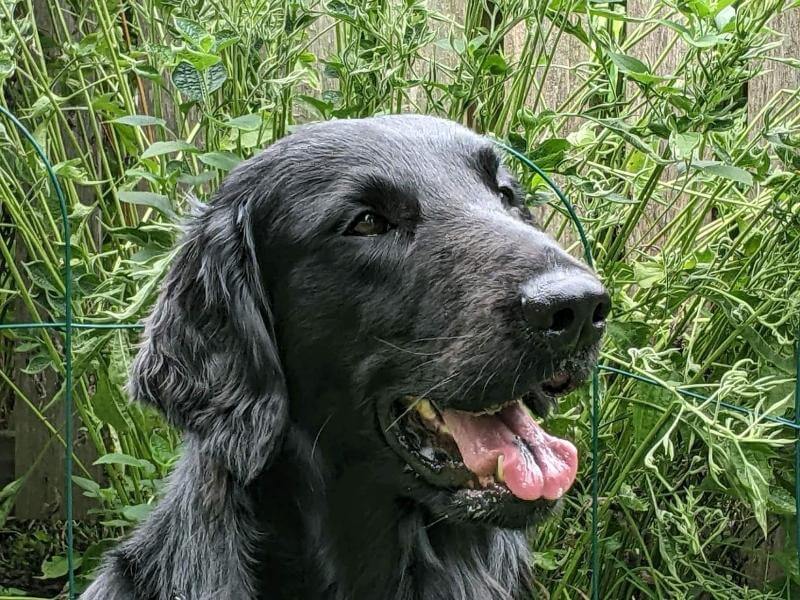
When asked to write about the Flat-Coated Retriever again, and concentrating on head and silhouette, I welcomed the opportunity. Why? Well, I had been somewhat eager in recent months to try and convey what the two breed hallmark characteristics should indeed look like, not only to the lay person but to fellow judges, breeders, and owners of this magnificent breed.
To say that a breed is a “head breed” really does not say much. After all, we have over 200 “head” breeds. If you were to look at most any breed’s blackened silhouette of the head, you should be able to tell which breed it is. This should be true of the Flat-Coated Retrievers as well—differentiating the breed from the other Retrievers and most certainly from the rest of the Sporting Group. So, where does it go awry?
Understanding the subtle nuances will separate a good judge from a great judge, a breeder from someone who just breeds dogs, and an owner who truly loves this breed—not just their dog. For the purpose of this article, it will be explained in-depth what the headpiece and silhouette of the Flat-Coated Retriever (referred to as the Flat-Coat) should ultimately look like.
The head is one of the hallmarks of the breed. It is described as “one-piece.” I often describe it to future judges as being carved from a single brick of clay, but here is where we can get into a bit of trouble. Some may say they INSTANTLY know what that means, although it can take may years to truly understand all of the finer points of that descriptor.
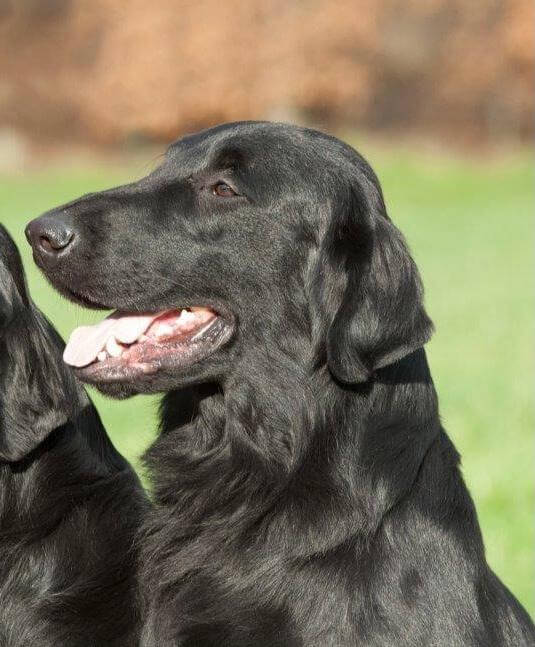
Let’s start with the ear set. This seems to be getting away from some. The ear should be level with the eye. This differs from several of the other Retriever breeds, which are slightly different to very different.
The Golden Retriever standard states, “Ears rather short with front edge attached well behind and just above the eye and falling close to cheek.”
The Chesapeake Bay Retriever official standard states, “Ears are to be small, set well up on the head, hanging loosely, and of medium leather.”
And the Curly-Coated Retriever standard states, “Ears are to be small, set well up on the head, hanging loosely, and of medium leather.”
The Labrador Retriever standard reads, “The ears should hang moderately close to the head, set rather far back, and somewhat low on the skull; slightly above eye level. Ears should not be large and heavy, but in proportion with the skull and reach to the inside of the eye when pulled forward.” The Labrador standard seems to be the closest to the Flat-Coat with regards to ear set, but let’s see how the Flat-Coat head differs from all the Retrievers.
The Flat-Coated Retriever Standard states, “Ears relatively small, well set on, lying close to the side of the head and thickly feathered. Not low set (houndlike or setterish).” Maybe some confusion comes from what the official standard does not say, only what it infers. It says, “NOT LOW SET,” but this should not be interpreted as HIGH SET. To look a little deeper, I’ll refer to the Official Illustrated Standard of the Flat-Coated Retriever to further explain.
In the Illustrated Standard, the outline of the head is shown without ears. This is because the ears should be relaxed and blend into the hair of the neck when the head is being evaluated. The ears can be held down by either the handler or the judge to do this. With this in mind, you can see that in no way can the ears be set high on top of the head, nor should they be presented that way.

The backskull should not be wide. The Illustrated Standard shows the head shape from the side and from above, to show the barely perceivable stop and the width of the backskull in comparison to the foreface. The dog should have an alert and kind expression, and dark, almond-shaped eyes set widely apart. The zygomatic arch should be clean and flush, and the foreface should be well-filled. As I have said previously, although the headpiece of the Flat-Coat is one of its most distinguishable characteristics, the emphasis on head is so heavily weighted at times that the overall silhouette is lost. Consider the head as part of the overall silhouette.
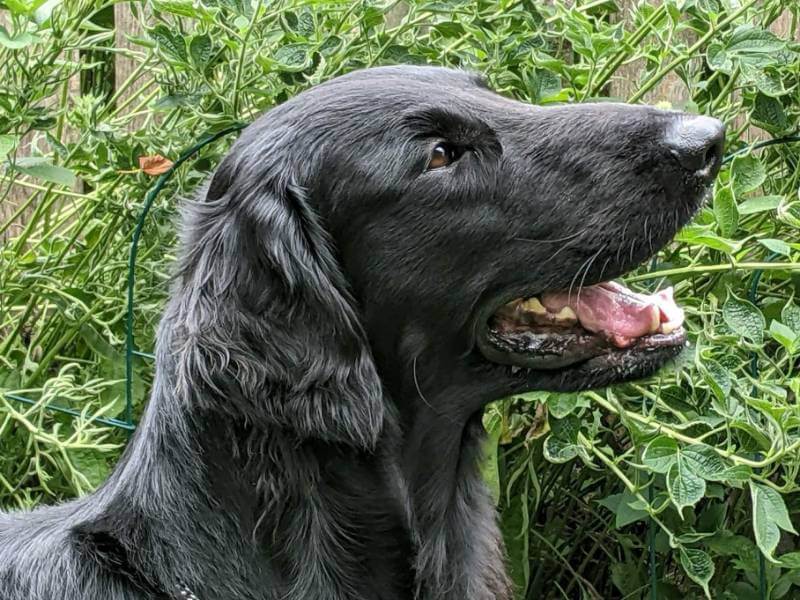
Tasked with describing the silhouette, the Breed Standard specifically speaks of the uniqueness of the standing and moving silhouette. The outline of the Flat-Coat is slightly longer than tall, with the prow, forechest, and rib return shaping a blunted triangle. There should be adequate length of neck, with the shoulders long and well-laidback, and with the shoulder blade and upper arm being approximately equal in length, thus allowing the dog to reach without restriction.
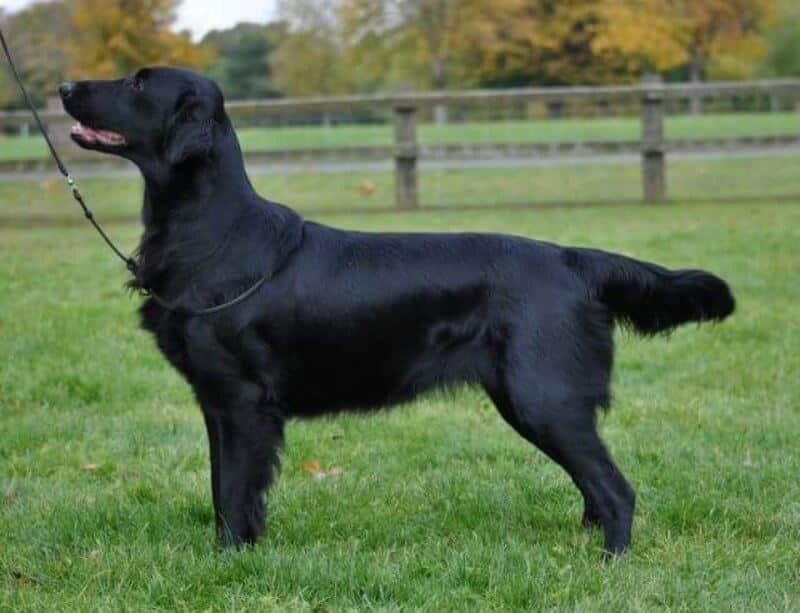
Musculature is described as wiry rather than bulky. Elbows should be clean, close to the body, and set well-back under the withers. Angulation in front is in balance with the rear assembly. Upper thighs are powerful and well-muscled. There is a good turn of stifle with a sound, strong joint. Second thigh (stifle to hock joint) is a crucial component of a strong, balanced rear. The second or lower thigh is as long as (or only slightly longer than) the upper thigh.
As you can imagine, over-angulated is as faulty as under-angulated, and both affect rear drive. The hocks are strong and well-let down. The feet on the Flat-Coated Retriever are oval or round. They are medium-sized and tight, with well-arched toes and thick pads; never flat or splayed.
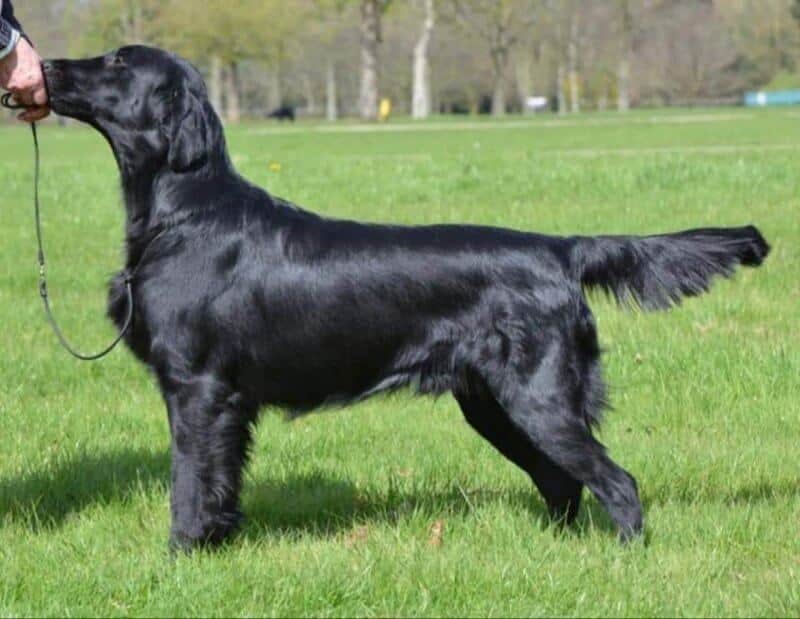
With the head, shoulders, knees, and toes as described in this article, the Flat-Coated Retriever has one more key component to the silhouette. It is of utmost importance that the Flat-Coat have a wagging tail at most times. This is a crucial component. In other words, at final evaluation of a Flat-Coated Retriever, ask yourself, “Does the silhouette fit and is there a wagging tail attached?”
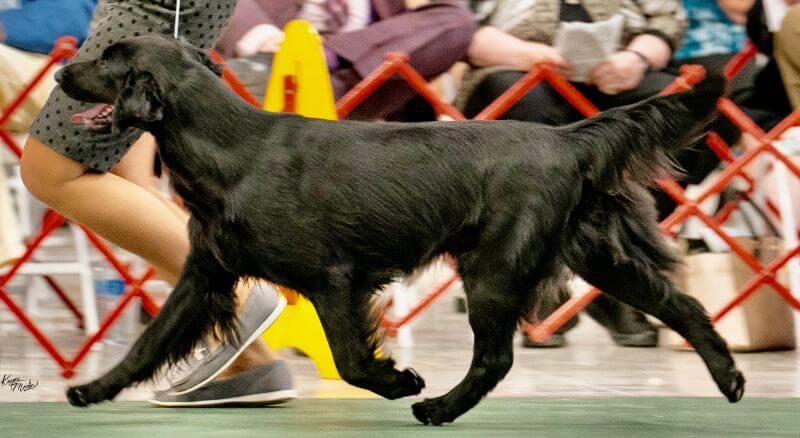
In the end, when evaluating the head and overall silhouette of the Flat-Coated Retriever at work, play or show, first decide if you have correctly identified the hallmark characteristics. I can guarantee you that there are many correct Flat-Coats gracing couches, and many that are incorrect garnering opinions. It is your job as judges, breeders, and owners, without bias, to sort it out.
With regards to judging or evaluating the breed, it should be noted that evaluating a Flat-Coat moving freely on a loose lead and standing naturally is more important than judging him posed. Rewarding incorrect Flat-Coated Retrievers at high levels puts conscientious breeders who are trying to preserve this unique breed at a disadvantage, as the incorrect will soon manage to be perceived as true.
We have the opportunity to collectively keep the breed correct through continued education, thoughtful breeding, and diligently adhering to the Breed Standard when judging. The reward will be the preservation of a beautiful and rare breed, and will most certainly be accompanied by a smile.
The FCRSA Official Illustrated Standard
The Official Standard for the Flat-Coated Retriever
Flat-Coated Retrievers, Brenda Philips 1996
A Review of the Flat-Coated Retriever, Nancy Laughton 1980
The best way to ensure a long and happy relationship with a purebred dog is to purchase one from a responsible breeder. Not sure where to begin finding a breeder? Contact the National Parent Club’s Breeder Referral person, which you can find on the AKC Breeder Referral Contacts page.
Did you know nearly every recognized AKC purebred has a dedicated rescue group? Find your new best friend on the AKC Rescue Network Listing.
Showsight Magazine is the only publication to offer dedicated Digital Breed Magazines for ALL recognized AKC Breeds.
Read and learn more about the bold cheerful Flat-Coated Retriever dog breed with articles and information in our Flat-Coated Retriever Dog Breed Magazine.
Error embedding FlippingBook shortcode, please check the flipbook url. (https://digital.showsightmagazine.com/view/866118/)
